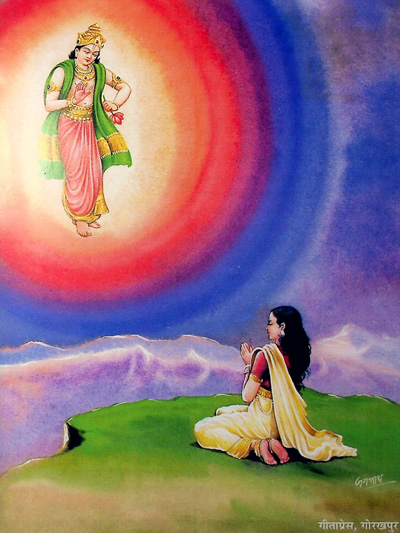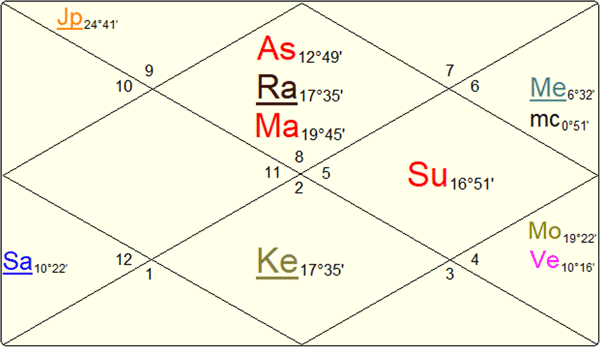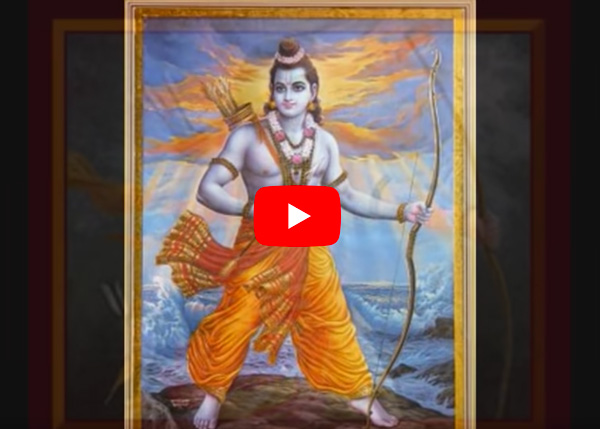Spring | Summer | Fall | Winter | |
2025 | Volume 67 |
| Volume 65 | Volume 66 |
Volume 55, 20 December 2021
“The sun shines because my eyes shine, my eyes shine because my mind shines, my mind shines because I shine. I shine because I cannot but shine.”
Cosmic Hide and Seek
Why do kids love the game of hide and seek? Probably a complex psychological question that I am sure to oversimplify. However, most would agree that the angst of losing something and the joy of finding it is a key to the endurance of this game.

Is the cosmos playing hide and seek with us? The luminaries disappear. There is the monthly disappearance of the Moon and the periodic disappearance of both Sun and /or Moon during eclipses. The grahas “disappear” when they are totally combust. They, and even some of the fixed stars, “disappear” when another astronomical object occludes them (covers them) like the Moon does to certain stars and grahas as it travels along the ecliptic.
Do they all really disappear or is it that we can’t see them from our vantage point on earth? If we were in a spaceship would we have seen the Sun completely covered by the Moon coming in between it and the earth? The answer is no. It is from our perspective that these cosmic bodies “disappear” because the light which is generated from the stars, the only source of light in the cosmos, has gotten shadowed in some way or other from our perception.
This is a powerful metaphor to keep in mind as December deepens. Ancient cultures performed elaborte rituals to ensure the Sun would “come back” after its disappearing act—the diminishing daylight day by day at this time of year.
Is the Sun going away? Is its output radically different? Nothing in our solar system is as steady and fixed as our star, the Sun. Though labeled as a planet, it is a self-effflugent star, the source of all light and life in our solar system wherever it exists or may have existed. It is no wonder that ancient civilzations revered the Sun and current civilizations continue to do the same in their particular ways. Even those not inclined to any “theism” naturally hold a reverence for the Sun
The Vedic tradition consistently uses the Sun as a dṛṣṭānta—a teaching tool to exemplify the subtle concept of the light of consciousness which is omnipresent but not subject to our direct perception. It is not a surprise, therefore, that in Jyotiṣa the Sun represents ātma. It comes from the root “ap” which means to obtain. In the tradiiton, ātma is referred to as “apnoti sarvam” - that which obtains everywhere - the all pervading wholeness.
The Birth of the Sun
Traditional cultures encoded profound observations and teachings in their stories. As we honor the Sun at the winter solstice, I thought a brief re-telling of the Sun’s birth from tales I have heard or read, mainly from the Viṣṇu Purāṇa, would be appropriate. Hopefully it will serve as a reminder of why the Sun is so revered in the Vedic tradition.
When it came time once again to create the universe, Brahmā the Creator was born from a lotus extending from the navel of the reclining Lord Viṣṇu. He was charged with populating the three worlds with all manner of life forms. This awesome task was replete with trials and tribulations, yet Brahmā succeeded in bringing forth devatas, asuras, humans, and an endless variety of plants and animals.
An important member of Brahmā’s lineage was Sage Kaśyapa. Among Kaśaypa’s many wives were thirteen of the daughters of Dakṣa, a son of Brahmā. These unions were fruitful and offspring of all kinds resulted. But, as many creation stories relate, once there is more than one, there is division. This was the case, as family members turned on each other and kin became foes.

The most prominent of Kaśyapa’s wives was Aditi, who bears the title of Mother of the Gods. She was broken-hearted at the enmities in the very heart of the family and asked her husband to give her a son who would be dedicated only to the welfare of the world, completely impartial and devoid of any envy or hatred. Kaśyapa advised her to pray, as a son like that would be beyond his power to father. Aditi was assiduous in performing austerities that she might be worthy of such a child.
In that purified state, she prayed to Lord Viṣṇu and was given a vision of the One who shines on the king and the beggar alike, steady and radiant, the source of all life. And so it came to pass that she bore the Sun god Sūrya, in whom the power of all the Vedas eternally blazes.
Invoking Sūrya is such an auspicious practice that Sage Agastya, aware that Rāma was facing an unimaginable foe, gave him the magnificent prayer known as Āditya Hṛdayam (Heart of the Sun) in praise of Sūrya, which would ensure his victory over Rāvaṇa. It is filled with inspiring poetic images of the majesty of the Sun, the embodiment of all gods and the origin of everything in the universe.
These beautiful verses have been recited countless times over the centuries as people greet the rising Sun. Swami Tattvavidananda wrote a beautiful translation and commentary on them and here is but one of the many inspiring verses:
हिरण्यगर्भश्शिशिरस्तपनोऽहस्कतो रविः ।
अग्निगर्भोऽदितेः पुत्रश्शङ्खश्शिशिरनाशनः ।। १२
The Sun is the Cosmic Person. He causes comfort and also discomfort with his rays. He rises boisterously and brings forth the daybreak. He is all fire in the core. The Sun, the offspring of Aditi, is the all pervading Brahman of infinite bliss. He casts off the cold.
When the Sun Shines Brightly
In a previous newsletter, I discussed the quandary of interpreting the Sun in a Jyotiṣ chart. The Sun is the source of all light and the seed of the universe, yet paridoxically it is designated as a natural malefic. However the multiple, sometimes contrasting roles a graha might play will find a way to express in a life.
My teacher Hart explained this in a very practical way. He would question someone in the class (let’s use me in this example) as follows: “Penny, are you a mother? Are you a wife? Are you a daughter? Are you a student?” The answer to all was yes to which Hart said, “so what are you Penny?” The obvious answer was/is, all of those things. Then came the punchline. “So why is it difficult to understand that the same graha has different roles to play in chart interpretation?”
Let’s look at a brilliant example of how the Sun lights up the life of Peter Ueberroth and also takes on another role that is problematic. Though not exactly a household name today, Ueberroth is the epitome of organizing power, a strong attribute of a well-placed Sun as it is the Sun’s gravity that organizes the solar system and its reliable light that organizes all of our daily routines.

A Jyotiṣi looking at this chart would be riveted by the ideal 10th bhāva. Sun, the lord of the 10th, is in its own bhāva (sva rāśi) and also has directional strength (dig bala). It is aspected by a powerful Jupiter (sva and retrograde) and flanked by an exalted and retrograde Mercury and Venus creating a beautiful Ravi Yoga known as an Ubhayacara yoga. Though not strong in the main chart, Venus is in its own rāśi of Libra in the navāṁśa chart giving it an underlying strength. Equally important is that there is no affliction to the 10th bhāva or its lord.
Peter Ueberroth is best known as the man who transformed the modern Olympics and as an excellent Commissioner of Baseball. Both showed his prowess as an organizer. The LA 1984 Olympic Games turned a $250 million profit - virtually unheard of! He also managed to improve all aspects of baseball from settling both Player and Umpire strikes, cleaning up the stadiums to make them family friendly and finishing his reign with all teams in the black or at least breaking even as opposed to 21 out of 26 teams losing money when he took over. His family foundation to this day is comitted to supporting yourth programs, education, health and human services.
Yet, the Sun as a natural malefic does show that side even in such a splendid chart. Why is the Sun classified as a natural malefic when it is considered a sattvic graha of pure light? It is because it burns. We all experience that at the beach in mid-summer at high-noon. By inference, in a chart, the Sun can burn where it is and where it aspects.

Notice that the 4th bhāva in Ueberroth’s chart is aspected not only by the Sun, but also by Mars. The significator of the 4th bhāva, the Moon, is a very new Moon. A strong Saturn aspects the 2nd bhāva of immediate family. And the 4th lord Saturn was transiting his sixth bhāva in its debilitated rāśi of Aries when he lost his mother at four years old.
Taking all of this into account, however, it is clear that on the balance, the Sun’s role in the karmaphala of this chart is as the brilliant organizer and adminstrator who had the Midas touch - whatever he touched turned to proverbial gold.
Media Corner - Āditya Hṛdayam
Here are two wonderful resources for those who might be interested in learning more about this beloved prayer.
Swami Tattvavidananda Saraswati produced a commentary on each verse of the Āditya Hṛdayam with clarity and inspiration. It is available on Amazon.
There is also a very good rendition on YouTube by the Sulamangalam Sisters. It is lively and melodic and you can sing along with them. Not so sure about some of the English translations or the phonetic spellings so use the book as your reference.













